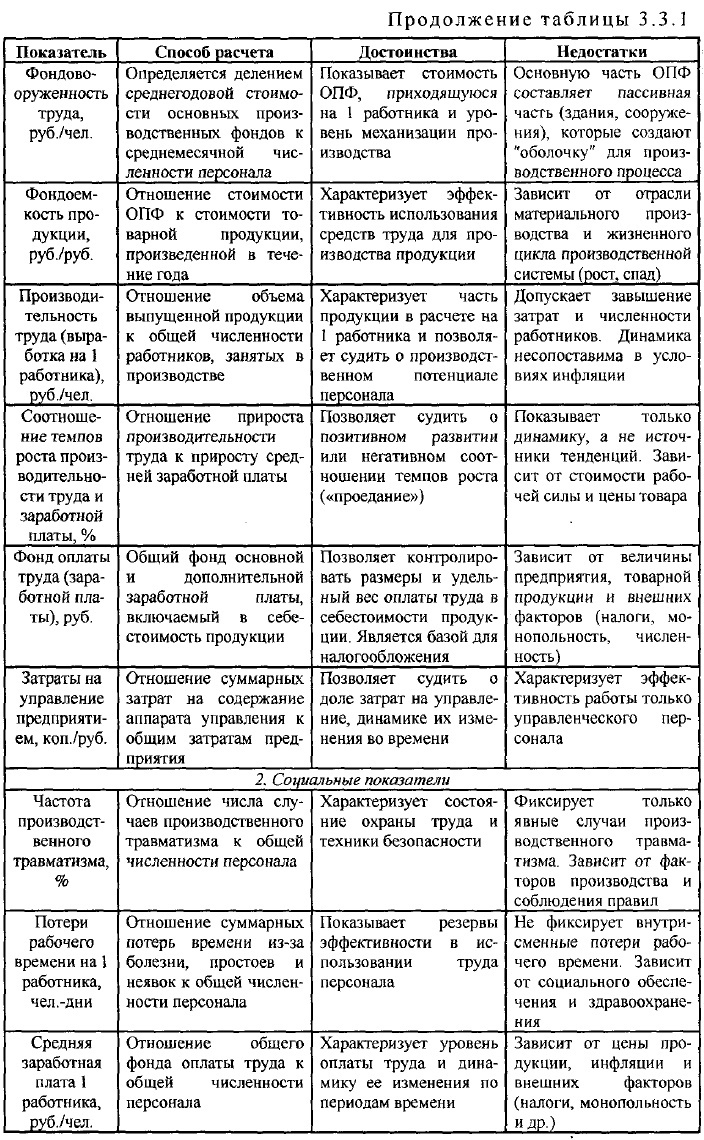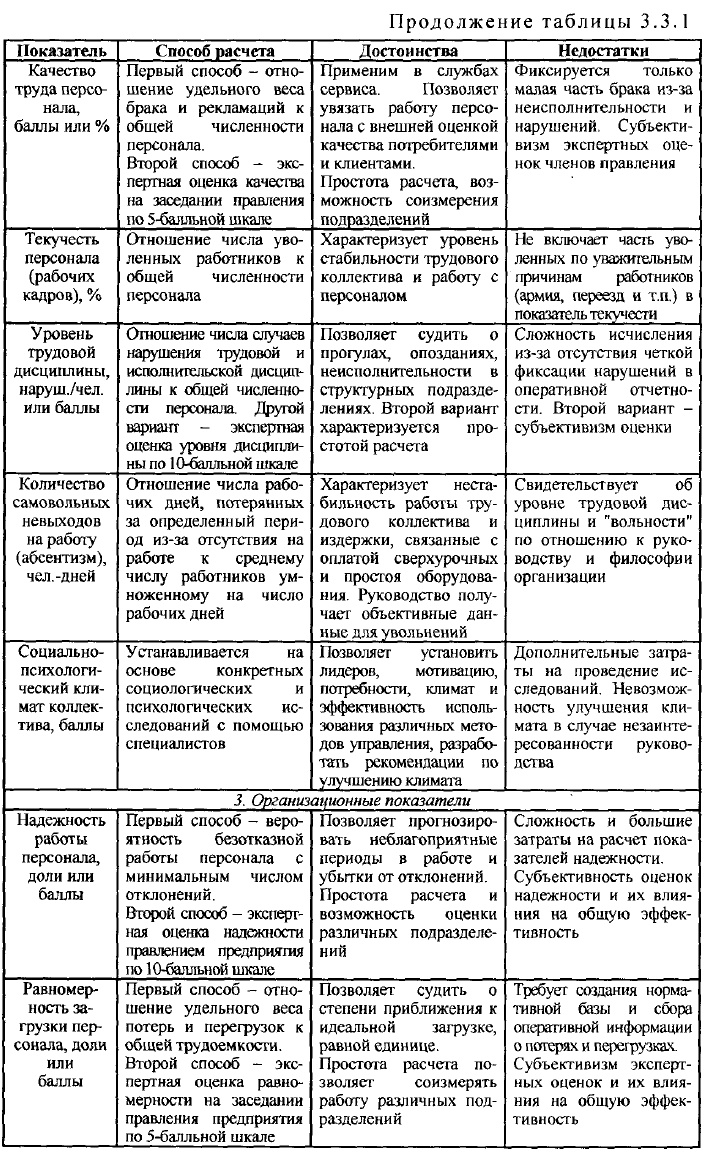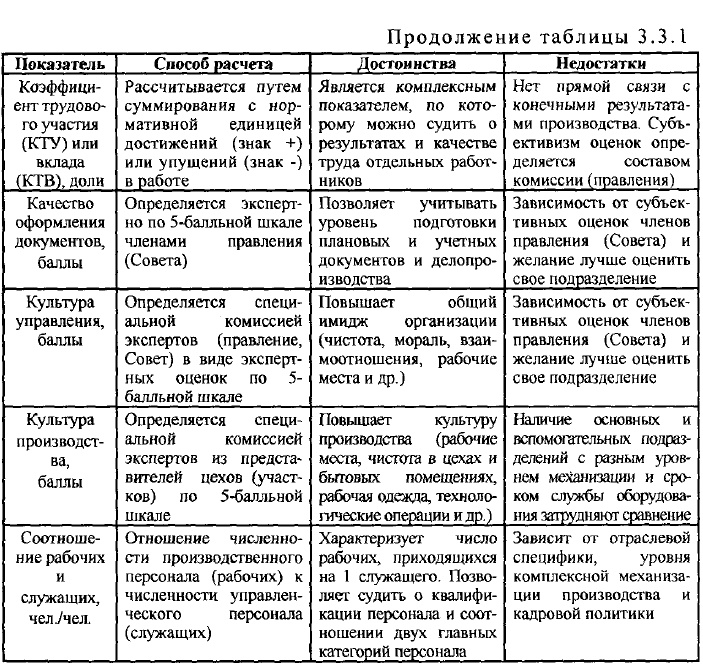Labor efficiency criteria
In the context of the interaction of the administrative system, market economy and democratization of society, the importance of scientific substantiation of the composition of performance indicators, reflecting the final results of the economic and social development of the enterprise, increases significantly. In a market economy, economic indicators such as profit, contractual obligations, labor productivity, sales volume, profitability are important. Consideration of the factors affecting these final indicators, as well as the development of recommendations for ensuring the profitable operation of the enterprise in the conditions of expanded production, becomes essential.
What criterion performance indicators should be taken into account in the model? It is known that the main generalizing indicator of the financial results of economic activity is profit. For all its importance and significance, profit, however, cannot be the only criterion indicator of the efficiency of the enterprise, since only indirectly characterizes the social activity of the enterprise, the quality and organization of labor of the personnel.
Therefore, there is a need to form a comprehensive indicator of efficiency, reflecting, on the one hand, the results of the economic development of the enterprise, and on the other, indicators of the social efficiency of personnel.
As one of the components of overall efficiency, it is legitimate to consider the efficiency of the work of management personnel. The activity of the management system is aimed at obtaining the final results of production, therefore, the effectiveness of the production management system can be considered as the result of the action of the management system, which ensures the achievement of the set goals at minimal cost. Evaluation of the effectiveness of the management system can be carried out according to quantitative and qualitative criteria.
Qualitative indicators include: the scientific and technical level of management, the level of qualifications of the employees of the administrative apparatus, the validity of the decisions made, the reliability and completeness of information, the level of management culture, the level of labor culture of the employees of the management apparatus.
The quantitative indicators of the assessment are: labor (the ratio of the number of managers, engineers, employees and workers; the cost of managerial labor per one ruble of production); financial (the amount of costs for management in the general wages fund). Currently, both in domestic and foreign practice, there is no single approach to determining the composition of organizational indicators.
The analysis of approaches to the scoring of personnel labor efficiency indicates a variety of criteria indicators. Obviously, an integrated approach to assessing efficiency is needed from the standpoint of the significance of the final results of production, productivity and quality of labor and the organization of work of personnel as a social system.
In the 90s of the XX century, under the guidance of the author of the textbook, experimental studies were carried out at 40 large and medium-sized enterprises to select a range of indicators and criteria for the organization's performance. In particular, using the methods of expert assessments and questionnaires, 468 managers of enterprises and their structural divisions and 52 scientists (doctors and candidates of sciences) were interviewed in order to determine the range and weight coefficients of criterion indicators. The scoring method for assessing labor efficiency is based on the results of these studies. The most significant criterion indicators are shown in table. 3.3.1. The leader, who owns the composition and methods of calculating criterial indicators, will never get "screwed up" in the eyes of his subordinates. Therefore, we recommend that you know this table in detail or "by heart".



The profit of the organization, as shown above, is the main financial result and calculates the surplus product of the enterprise in monetary form. In a market economy, the labor collective is interested in both increasing production volumes and reducing production costs, which allows increasing the mass of profits. The disadvantage of the profit indicator is manifested when it is used as a comparative indicator for evaluating the work of several enterprises. Suppose one enterprise has a profit of 50 million rubles, and the second one - 5 million rubles, however, without knowing the volume of production, it cannot be said that the second enterprise received the worst result. The same disadvantage has an indicator of the cost of production.
From this point of view, a good comparative indicator is the cost per 1 ruble. products. Costs, characterizing the ratio of the cost to the cost of production, are applicable to assess the dynamics of enterprise development in different periods of time with a profitable and unprofitable operation of the enterprise. This is a universal indicator that characterizes, simultaneously with the cost price, profit and loss in the total cost of production. Therefore, along with profit, it can also serve as a criterion indicator of work efficiency.
management costs in the form of the absolute value of the cost of maintaining the apparatus (thousand rubles) or the relative value in the form of a specific weight in the cost of production (kopecks / rubles) characterize the efficiency of management. Determination of the optimal value of management costs according to the criterion of the maximum balance sheet profit allows you to control the costs of the management apparatus of the enterprise.
Social indicators of labor should characterize the most significant results of labor activity. These include the average annual wages of workers, the total loss of working time per worker and the turnover of workers. The size and dynamics of average annual wages characterize the monetary equivalent of the cost of labor and, to a certain extent, the standard of living of workers. The indicator of the total loss of working time per 1 employee due to illness, absenteeism, whole-day and intra-shift downtime represents a reserve for increasing the fund of working time in production. They include such indicators as staff turnover, the level of labor discipline.
The indicator of staff turnover indicates the level of stability of the workforce. High turnover may be the result of poor organization of work with personnel, unsatisfactory living and housing conditions, low level of labor protection, safety and mechanization of labor.
Organizational indicators of labor quality combine a number of characteristics that do not have quantitative measurement, but allow for qualitative expert assessments. These include such characteristics as: the quality of paperwork, the ratio of workers and employees, the reliability of personnel, the uniformity of the workload of the personnel, the coefficient of labor participation, the socio-psychological climate in the team.
These indicators reflect the organizational level of the personnel of the enterprise and can be taken as criteria for the efficiency of the enterprise.
The reliability of the personnel is determined by the probabilistic value of possible failures in the work of all divisions due to late provision of information, errors in calculations, violations of labor discipline and is an important evaluative indicator of the effectiveness of the personnel.
The uniformity of the workload of personnel characterizes the proportion of losses and overloads of workers in the total labor intensity of the enterprise. The author of the book proved the influence of uniform workload of personnel on the final results of the enterprise and substantiated the expediency of choosing it as a criterial indicator of efficiency.
The level of labor discipline reflects the ratio of the number of cases of violation of labor and performance discipline to the total number of personnel and allows us to judge the order at the enterprise.
The ratio of workers and employees shows the ratio of the number of production personnel to the number of management personnel and characterizes their impact on labor productivity. The socio-psychological climate in the team is a very important social indicator that makes it possible to judge the motivation, needs and conflicts in the work collective.
Such a composition of indicators makes it possible to assess the main parameters of the organization of the work of personnel (efficiency, reliability, uniformity and quality), and they should be included in the list of criterion indicators of efficiency. Obviously, the composition of the indicators should be variable depending on the characteristics of the development of the market economy, should be specified and supplemented in the context of the dynamic development of an enterprise or organization.
 Discounted payback period
Discounted payback period Methodological aspects of project management
Methodological aspects of project management Scrum development methodology
Scrum development methodology